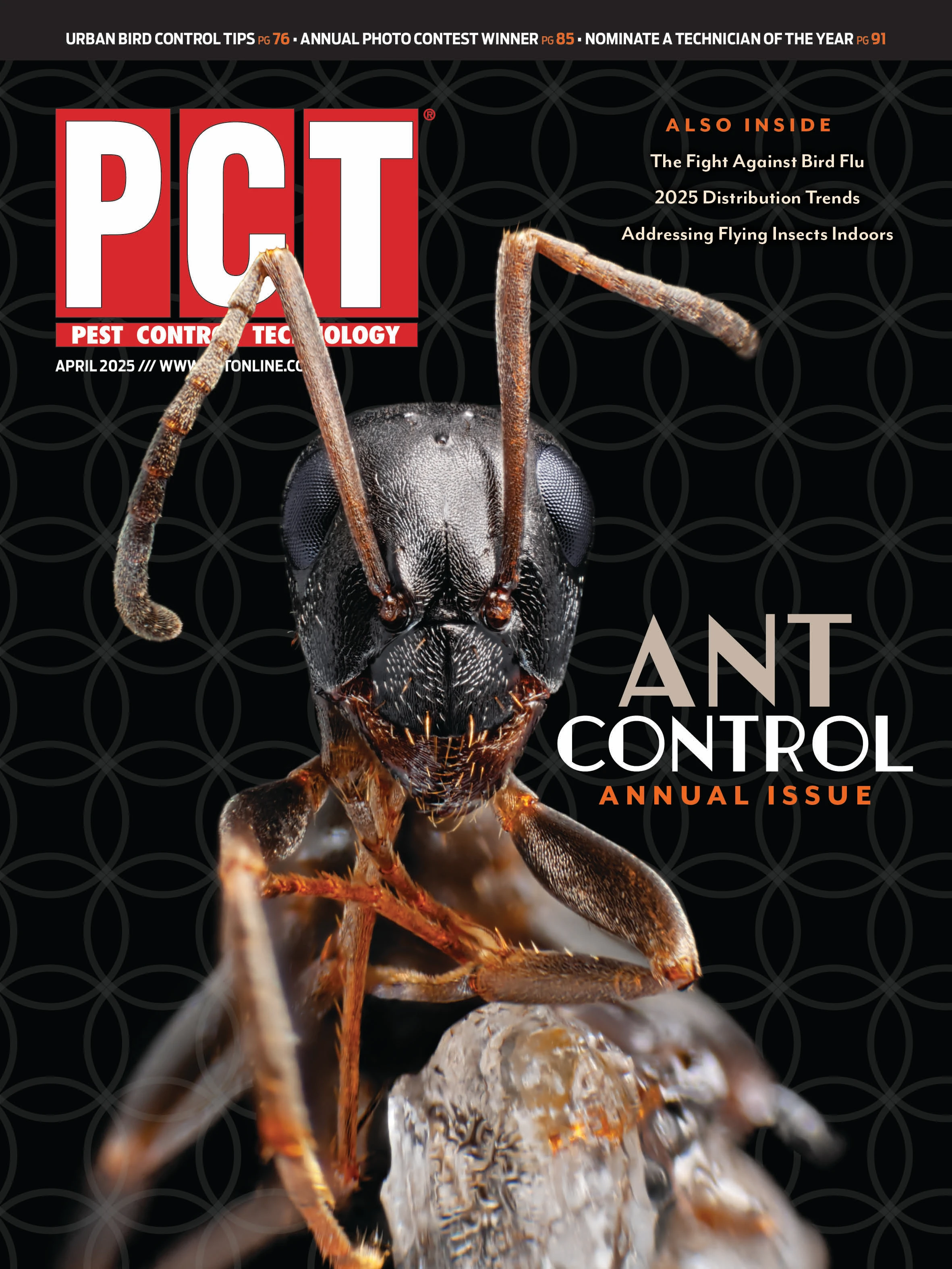

Asked how they typically use green products, 2025 Naturals Market survey respondents were more likely to say as a preventive treatment and as a primary means of control than in 2024. This year, 64% are using naturals for prevention, compared with 58% last year. “Primary means of control” saw an even greater — 10% — increase, as 44% said they typically use green products for primary control.
These results point to PMPs’ commitment to reaching for natural products whenever an appropriate opportunity arises.
SHOOTING FOR THE GREEN. Greg Scott and his team at Guardian Pest Protection in Rockledge, Fla., approach pest management primarily with green products and practices. He said they are striving to go all the way green and are right now at about 90%.
“Botanicals can be effective in certain circumstances — managing wasps and other flying, stinging insects, for example, and flushing out German cockroaches — but their efficacy is not where it needs to be yet for some of the primary uses,” Scott shared. “At Guardian, in particular, our approach is anchored to the concept of creating a barrier on the exterior of a home; we have as yet been unable to match the residual of conventional synthetic pesticides with botanicals.”
Scott is working toward overcoming this challenge by combining botanicals with borates in a three-tiered program that integrates the application of a botanical spray to a home’s perimeter with a heavy borate-based granular bait further out, supplemented by a sustainable dust. “We’re testing this with established customers who are enthusiastic about moving to a sustainable and eco-friendly service,” he said. “As environmental stewards, we are committed to protecting the planet, but we also need to make sure any service we provide works well, efficiently resolving customers’ pest issues.”


INDOOR, OUTDOOR PREFERENCES. Scott is among the 39% of respondents who told PCT they use green products primarily outdoors. Thirty-one percent reported using them primarily indoors, and 30% said they use them just as often indoors as outdoors.
In Shingle Springs, Calif., John McIntyre said that Highlander Termite & Pest Control responds to more requests for outdoor than indoor treatments. And because the company’s accounts are mostly multi-family residential buildings with challenging pest issues, he tends to rely more on conventional pesticides than green ones. “The only time we normally use green products is wintertime, because California rules and regulations restrict chemical applications if it’s raining or too moist. Natural products aren’t subject to those restrictions,” he said.
McIntyre isn’t opposed to using natural products; he said he has found one on the market that works very well in his program. He also, several years ago, formulated his own 25(b) exempt aerosol using essential oils, which he marketed until the COVID-19 pandemic compromised his supply chain. “We continue to use it a lot, usually when we’re dealing with student housing, which requires an all-natural approach since students are always coming and going. The essential oil formulation kills and repels bed bugs, fleas and other insects.”
WHAT’S BUGGING YOU? The type of pest you’re managing often makes a difference in whether you reach for a green or a synthetic product. PCT asked PMPs which pests they most commonly control with green products, and while the results vary from region to region, ants and occasional invaders were noted among the top five in every market. Cockroaches, spiders and mosquitoes were named in three of the four regions.
“If you use them according to the label, botanicals can work really well on mosquitoes,” said Jarvis Mimes, The Pest Guy Pest Management. “For the most part, my mosquito properties aren’t super large and don’t have a lot of shrubbery or fountains to attract heavy mosquito infestations. They belong to customers who just enjoy spending time outdoors and want a preventive treatment. A botanical is an ideal solution for these accounts. I do have one or two accounts with more aggressive mosquito activity, and I’ve had to use other products to add a heavier residual.”
Lindsay Bujalski, Pestco Professional Services, makes the case for green products in managing rodents as well. “Once we have rodents controlled inside using snap traps, monitoring and exclusion, we tend to have very good success with a green rodent repellent as opposed to strictly sticking with bait. The repellent is a nice way to add an extra layer of protection for the customer to help prevent rodents from coming back in.”

Explore the April 2025 Issue
Check out more from this issue and find your next story to read.